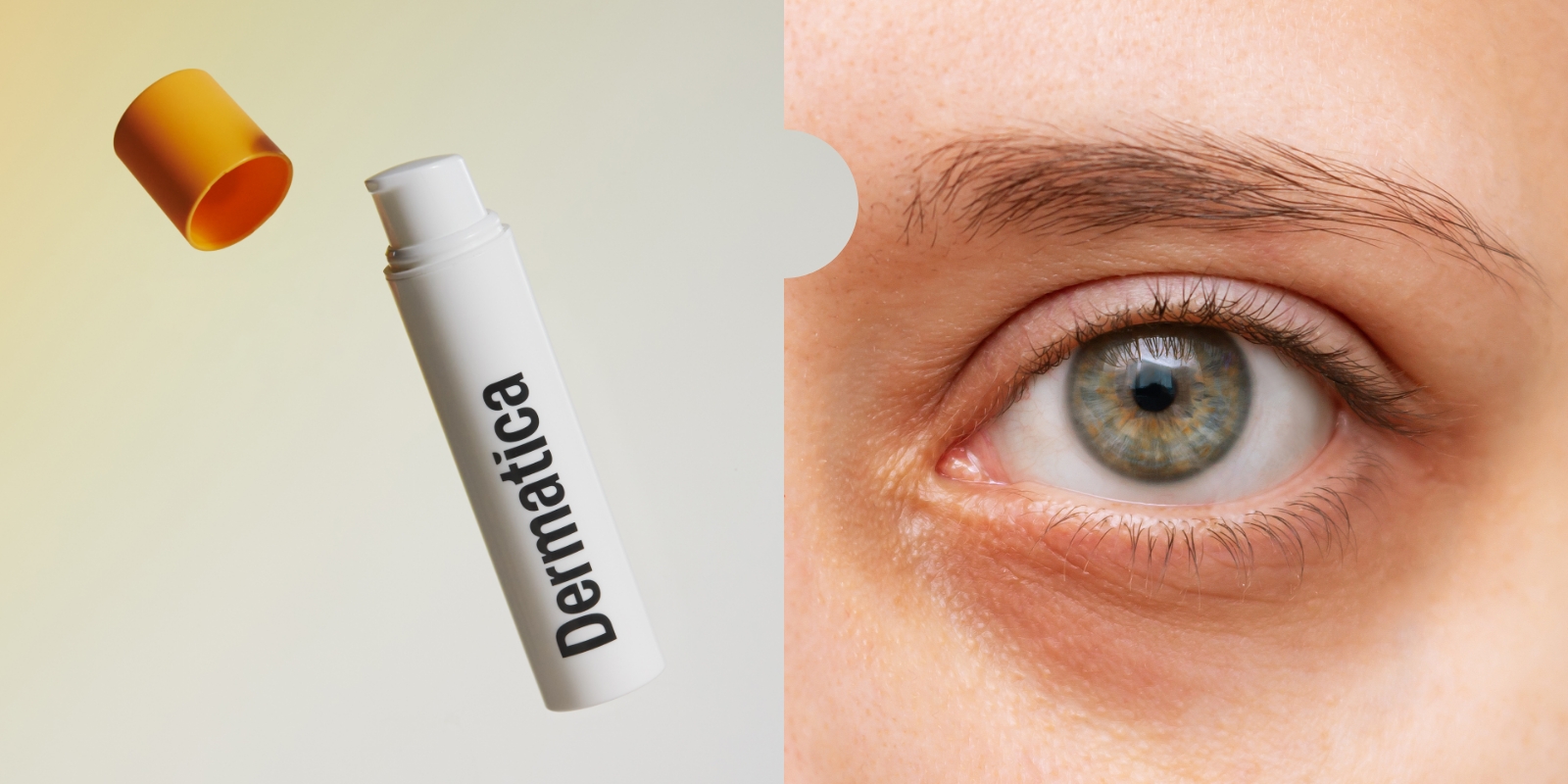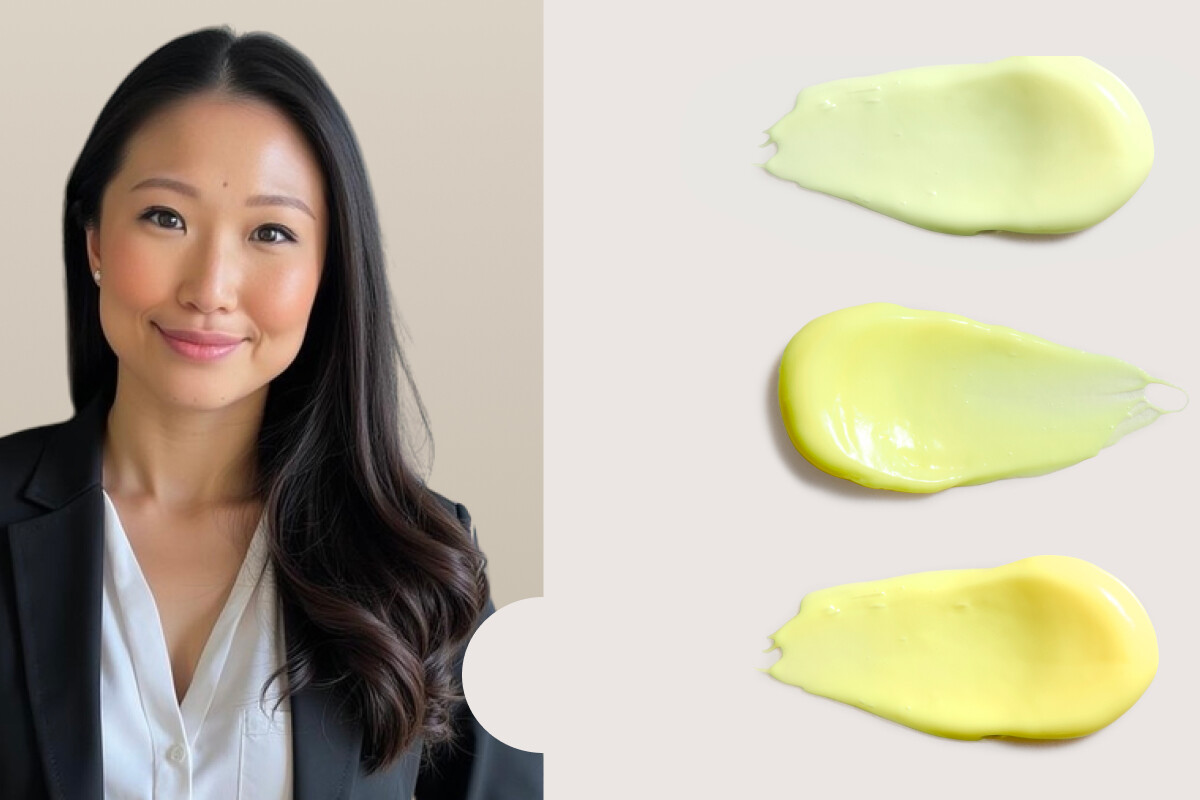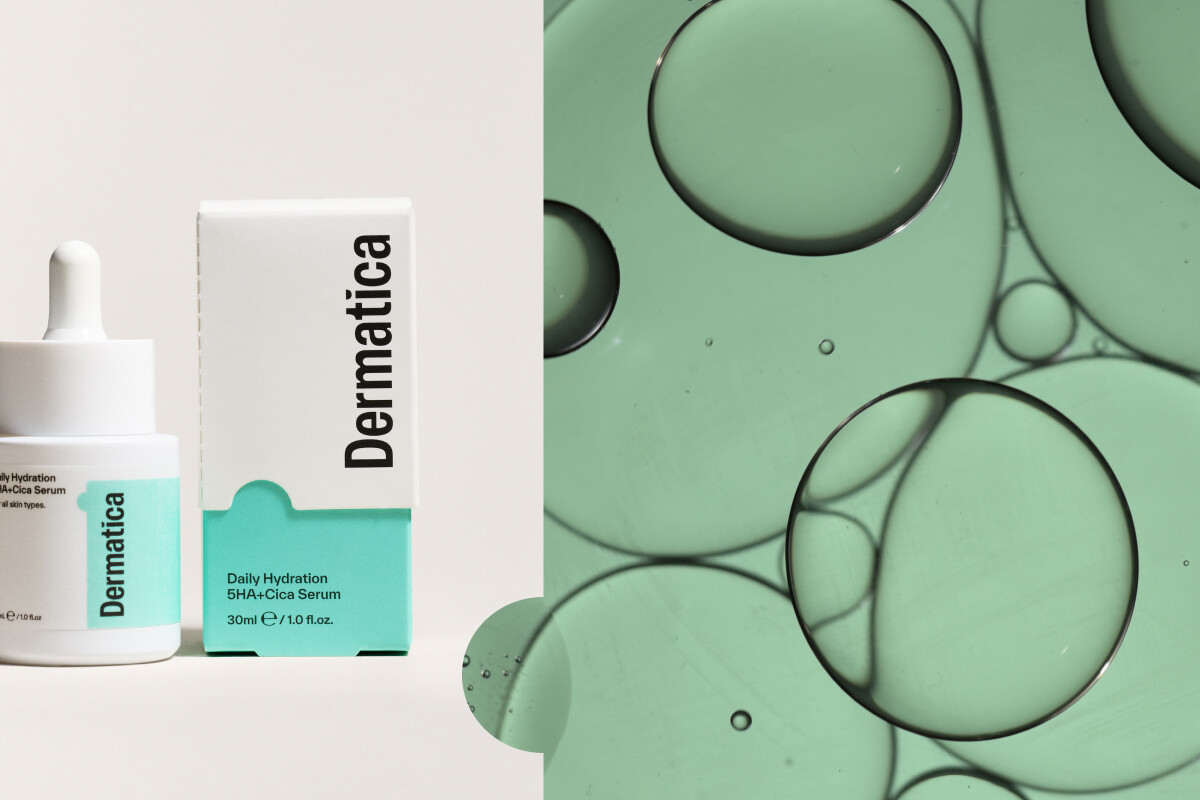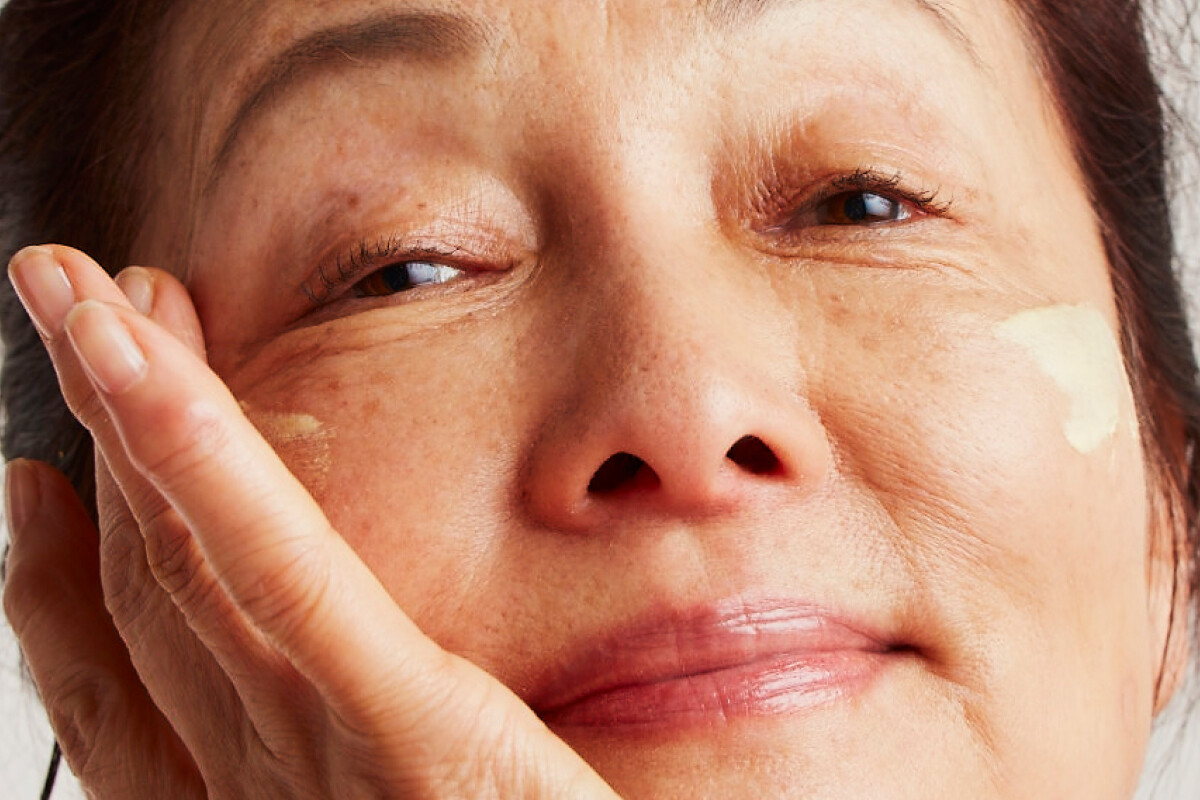By a country mile, one of the most common non-medical questions our Dermatica experts get asked is how to banish dark circles around the eyes. And this makes sense given we all notice them occasionally – whether that’s because of sleepless nights, jetlag, work, or simply our own genes.
And just like the slew of reasons why we might get them in the first place, there are also different types of dark circles that we can get. So to let you better understand why there’s no simple, single treatment to treat them, we’ll explain how our dermatology experts identify which type a person has, and which treatments they would recommend, too.
What Causes Dark Circles?
There are four main causes of dark circles that we know about.
The first is pigmentation, medically known as periorbital dark circles. This is due to excessive pigment production around the eyes. (1)
The second is vascular, a type that we call infraorbital dark circles in medicine. It’s recognised by thin eyelid skin that can make our blood vessels look more prominent. (2)
The third type of dark circles is structural – and these are just due to the shape of a person’s face. This type is also called infraorbital dark circles. The anatomy of some people’s facial features may cause the areas under their eyes to reflect light in a way that makes your under eye area look more hollow. This can make the area around your orbital bone seem darker.
Fourth and finally, most of us with dark circles have a combination of two or more of these causes.
Identifying Which Type Of Dark Circles You Have
You may be curious about which type of dark circles you have, or how to tell if the causes are due to a combination of factors. So here are some basic ways that you can tell at home.
Pigmented Type
This type is characterised by a band or rim that’s a darker brown tone or hue under the eye.
It’s a form of pigmentation where a darker pigment is produced around the orbital bone. We usually notice this type more in people of colour – so those with olive, brown or black skin types. This variation may be just how your skin looks normally, as people with darker, more melanin-rich skin tend to produce more pigment in general. Sometimes pigmented eye areas can run in families, too.
Rubbing or scratching itchy skin around your eyes, over time, can also cause some people’s skin to produce too much pigment. Inflammatory conditions like eczema, eyelid dermatitis, inflammation of the eyelid, or allergic reactions cause you to rub your eyes. The inflammation that comes from this irritation can often lead to post-inflammatory hyperpigmentation. Left untreated, these can all contribute to darker under-eye circles.
It’s also worth noting that extensive sun exposure and melasma can cause dark eye circles, too. (3)
Vascular Type
Vascular under eye circles show up as a blue, pink or purple hue under the eyes (depending on your skin colour and undertone). Because you’ll likely have thinner eyelid skin – which is down to your genetics – the tiny blood vessels under the surface look more prominent, which is the reason for the colour.
This type of dark circle is often associated with puffiness of the lower eyelid, too. Puffy eyelids can lead to more vascular congestion in that area, making your dark circles more obvious. (4)
Unlike the other types, vascular dark circles are made worse by lifestyle factors like sleep deprivation and salty food before bed – both of which can lead to congestion in the eye area. (2)
Structural Type
The contours of our facial features can also lead to dark circles, as this can contribute to hollowing or darkening of our under eyes around our tear troughs. The tear trough is the sunken area between our lower eyelid and our cheekbone. (5)
This type can affect anyone of any age, but they can become more obvious as we get older. Everyone’s skin naturally loses volume as we age, which causes structural changes to both the fat pads in our face, as well as our bones. That’s why structural dark circles are one of the most common types we see. Some of us just have them – and some of us get them with time. (2)
A Quick Test To Try
Want to check which type of dark eye circles you have? Here’s a test you can try. Keep in mind, it isn’t foolproof, but you might get an idea of the root causes of your eye circles.
Position yourself in front of a mirror. Use your finger to gently tug your lower eyelid down with a small amount of pressure. This movement should change the contours of your lower eyelid.
Watch how the light reflects off your lower eyelid. If you have structural eye circles, you should notice an improvement in your appearance. For people with vascular congestion, you won’t notice any improvement – and you might notice it gets worse (temporarily of course!). This is because the slight pressure you’re using decreases blood flow, causing more congestion. If you have pigmented eye circles, you won’t notice any change at all.
Treatment Options For Dark Under Eye Circles
Pigmentation
If your eye circles are caused by pigmentation, you’ll want to treat any underlying inflammation and get that under control first. If you don’t, unfortunately, any treatment will be pointless because your body will continue to produce too much pigment (melanin).
Once your inflammation has cleared up, look for skincare with science-backed brightening properties, as this will help to gently fade and even out excess melanin. Fragrance free is best, as perfumes can be irritating and your eyelid is more sensitive than the rest of your face.
Make sure any product you use is suitable for around the eye, as your eyelid skin is more delicate than other areas of the face. Some products might be too harsh.
Active Ingredients
A dermatologist or dermatology expert, like our team at Dermatica, may recommend effective ingredients like retinoids, hydroquinone and azelaic acid. These are helpful but can be irritating around the thinner skin of the delicate under eye area. Especially if you’re prone to skin conditions and inflammation. When using active ingredients around your eyes, always follow personalised guidance from a licensed dermatology professional so you don’t cause more inflammation and make your pigmentation worse.
For Gentler, Over-The-Counter Solutions, Look For Products With
Vitamin C: This topical vitamin not only has unbeatable brightening properties, it also boosts the effectiveness of your sunscreen and stimulates collagen production. You can try it in our
Vitamin C 15%: Fresh Batch Ascorbic Acid.
Niacinamide: This antioxidant improves skin brightness and hydration, and when combined with hyaluronic acid it plumps and improves the appearance of fine lines. Find it in our Hydrating Hyaluronic Acid + Vit B5 Serum.
Sunscreen: Wearing sunscreen around the eye area is a must if you have pigmentation. We know pigmentation worsens from chronic sun exposure, so use your favourite sunscreen that doesn’t burn or irritate your eyes. There are eye creams with SPF in them, but make sure it’s broad-spectrum and protects from UVA/UVB rays like our SPF50 Photodamage Defence Sunscreen. Wearing sunglasses with UV protection will also help. (3)
Vascular
Eye creams, though effective for vascular eye circles, only work temporarily and won’t provide any long-term solution or cure. There’s no way to truly, effectively improve them with topical skincare alone.
Using topical creams with retinoids and peptides can help plump and bulk up the eyelid area by enhancing collagen production and improving your skin’s overall thickness. But generally they won’t dramatically change your dark circles because your eyelid skin is much thinner than the rest of your face.
To even out your overall skin tone day to day, makeup correctors and concealers are effective at concealing the prominent blood vessels from your dark circles. If you notice your under-eye circles darken from lack of sleep or when you eat salty food, you may want to look at your lifestyle and try to eat a balanced diet, too. However, aesthetic treatments like tear trough fillers are going to be the most effective option. (4)
Structural
Because this type of dark under eye circles is only down to the natural, anatomical contours of your face, cosmetic rejuvenation like the fillers we mentioned above are really your best and most effective option. Skincare and eye creams won’t hurt of course, but they can’t change the shape of your face, so they won’t provide any significant improvements. (4)
So to sum up, most of us get dark under eye circles. They’re so common in fact, that we sometimes get them regardless of our age, lifestyle habits, skincare routine or skin type. There are also different types and causes of dark circles, so treating them doesn’t always have one answer.
Understanding what causes yours can help you find the most effective treatment root for you. And while brightening and collagen-boosting skincare can help pigmented types – vascular and structural dark circles may need in-office cosmetic procedures to get the results you’re looking for.
Find out what formulas are suitable for your skin by visiting our website.
References
1. Matsui MS, Schalka S, Vanderover G, Fthenakis CG, Christopher J, Bombarda PCP, et al. Physiological and lifestyle factors contributing to risk and severity of peri-orbital dark circles in the Brazilian population. Anais Brasileiros de Dermatologia. 2015 Aug;90(4):494–503.
2. Nakra T, Vrcek I, Ozgur O. Infraorbital dark circles: A review of the pathogenesis, evaluation and treatment. Journal of Cutaneous and Aesthetic Surgery. 2016;9(2):65.
3. Sarkar R, Ranjan R, Garg S, Garg VK, Sonthalia S, Bansal S. Periorbital Hyperpigmentation: A Comprehensive Review. The Journal of clinical and aesthetic dermatology [Internet]. 2016 [cited 2024 Sep 3];9(1):49–55. Available from: https://www.ncbi.nlm.nih.gov/pmc/articles/PMC4756872/
4. Park KY, Kwon HJ, Youn CS, Seo SJ, Kim MN. Treatments of Infra-Orbital Dark Circles by Various Etiologies. Annals of Dermatology [Internet]. 2018 Oct 1 [cited 2022 Mar 3];30(5):522–8. Available from: https://www.ncbi.nlm.nih.gov/pmc/articles/PMC7992473/
5. Sadick NS, Bosniak SL, Cantisano-Zilkha M, Glavas IP, Roy D. Definition of the tear trough and the tear trough rating scale. Journal of Cosmetic Dermatology. 2007 Nov 30;6(4):218–22.
Related Posts
October 30, 2025
0 Comments11 Minutes





